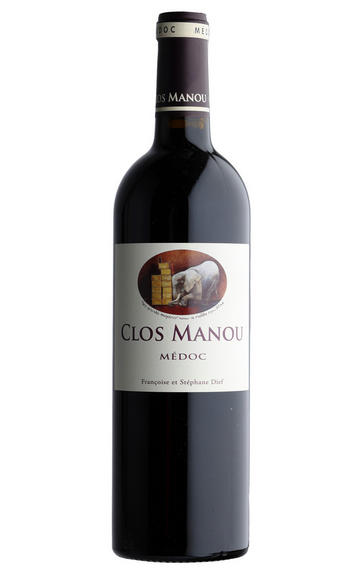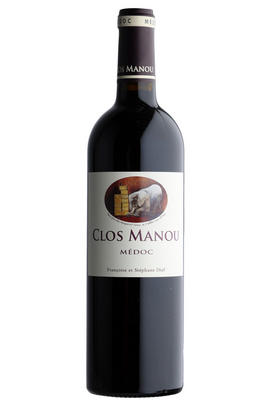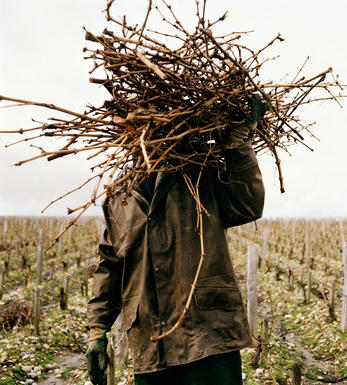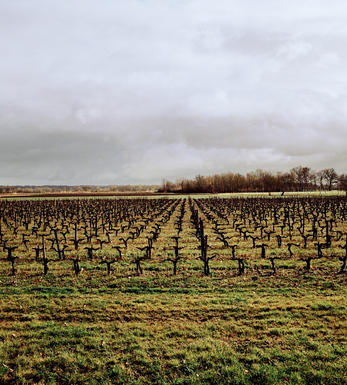
2017 Clos Manou, Médoc, Bordeaux

Critics reviews
The 2017 Clos Manou comes from Saint Christoly-du-Médoc and Conquèques that is matured in 70% new oak and 5% in terracotta jars. This has a perfumed bouquet with vivid redcurrant and cranberry fruit, becoming more glossy with aeration. Cassis emerges with time. The palate is medium-bodied with supple tannins, a fine bead of acidity with a gentle grip. This is lightly spiced with a slightly tarry finish. Overall, a lovely Médoc that will give a lot of pleasure.
Drink 2022 - 2036
Neal Martin, vinous.com (Feb 2020)
The 2017 Clos Manou is dark and sumptuous in the glass with no hard edges and exceptional balance. Super-ripe black cherry, chocolate, spice, new leather and licorice all meld together in this racy, flamboyant wine.
Drink 2022 - 2027
Antonio Galloni, vinous.com (Mar 2020)
Francçoise and Stéphane Dief continue to apply a maniacal attention to detail at this estate - destalking by hand, for example - in an appellation that doesn't always reward in terms of price per bottle. This wine has good structure and depth of fruit, and they have clearly worked hard to get intensity without overpowering the basic flavours of cassis and bilberry. Soft liquorice and cedar notes come from the 70% new oak, where some of the wine will stay for 17 months. The rest goes in cement eggs and a small number of clay amphoras. They work organically but are not certified.
Drink 2022 - 2032
Jane Anson, Decanter.com (Apr 2018)
About this WINE

Clos Manou
Clos Manou is an 18-hectare estate in the northern reaches of the Médoc peninsula. Own and run by husband-and-wife Stéphane and Françoise Dief, the first vintage here was 1998. They follow organic and biodynamic principles, though have not sought certification.
In the northern reaches of the Médoc peninsula, husband-and-wife team Stéphane and Françoise Dief own and run Clos Manou. Their first vintage in 1998 was just 600 bottles; they have built the estate up over time to reach 18 hectares, broken into 55 distinct plots. In her book Inside Bordeaux, Jane Anson calls Clos Manou “very much an insider’s wine, not widely known outside of a few loyal followers.”
The Clos Manou vineyard is notable for its low-trained vines planted at high density, with grasses growing in between vines. This is a hands-on operation; harvest is entirely manual.
In the cellar, the Diefs make use of a vast range of fermentation and ageing vessels: there are concrete eggs, terracotta amphoras, concrete tanks of varying sizes and oak barrels from nine different coopers. Stéphane and Françoise do everything themselves; there is no external consultant here. There is minimal intervention in the cellar, and very little added sulphur.
The Diefs farm Clos Manou following organic and biodynamic practices, though they have not sought certification. They plan to have HVE-3 certification from the 2021 vintage.

Médoc
The Médoc is arguably the most famous red wine district in the world, home to many of the greatest and most renowned names of Bordeaux. It stretches north-west from the city of Bordeaux with the Gironde estuary to the east. The vineyards extend up to eight miles from the river and run for about 50 miles northwards. It is a surprisingly dull landscape, with the best land found on gravelly outcrops.
The most northerly, low-lying vineyards are classified as Bas-Médoc, whilst those on higher ground, closer to the city of Bordeaux, are entitled to the Haut-Médoc appellation. Within that appellation, there are further communal or village appellations, namely Listrac and Moulis, and the four great names of St. Estèphe, Pauillac, St Julien and Margaux. As a rule of thumb, the greatest wines are made at those properties closest to the river.
Recommended Châteaux from the Bas-Médoc: Ch. Le Boscq, Ch. Patache d'Aux, Ch. Potensac, Ch. la Tour de By, Ch. La Tour Carnet, La Tour Haut-Caussan, Ch. La Tour-St-Bonnet, Ch. Verdignan, Ch. Rolland de By
Recommended châteaux from the Haut-Médoc : Ch. La Lagune, Ch. Cantemerle, Ch d’Agassac, Ch. Belgrave, Ch. Camensac, Ch. Charmail, Ch. Cissac, Ch. Citran, Ch. Lanessan, Ch. Liversan, Ch. du Moulin Rouge, Ch. Sociando-Mallet, Ch. La Tour Carnet, Ch. Verdignan, Ch. d’Arche, Ch. Beaumont, Ch. Lamothe-Bergeron

Cabernet Sauvignon Blend
Cabernet Sauvignon lends itself particularly well in blends with Merlot. This is actually the archetypal Bordeaux blend, though in different proportions in the sub-regions and sometimes topped up with Cabernet Franc, Malbec, and Petit Verdot.
In the Médoc and Graves the percentage of Cabernet Sauvignon in the blend can range from 95% (Mouton-Rothschild) to as low as 40%. It is particularly suited to the dry, warm, free- draining, gravel-rich soils and is responsible for the redolent cassis characteristics as well as the depth of colour, tannic structure and pronounced acidity of Médoc wines. However 100% Cabernet Sauvignon wines can be slightly hollow-tasting in the middle palate and Merlot with its generous, fleshy fruit flavours acts as a perfect foil by filling in this cavity.
In St-Emilion and Pomerol, the blends are Merlot dominated as Cabernet Sauvignon can struggle to ripen there - when it is included, it adds structure and body to the wine. Sassicaia is the most famous Bordeaux blend in Italy and has spawned many imitations, whereby the blend is now firmly established in the New World and particularly in California and Australia.


Buying options
Add to wishlist
Description
The 2017 Clos Manou comes from Saint Christoly-du-Médoc and Conquèques that is matured in 70% new oak and 5% in terracotta jars. This has a perfumed bouquet with vivid redcurrant and cranberry fruit, becoming more glossy with aeration. Cassis emerges with time. The palate is medium-bodied with supple tannins, a fine bead of acidity with a gentle grip. This is lightly spiced with a slightly tarry finish. Overall, a lovely Médoc that will give a lot of pleasure.
Drink 2022 - 2036
Neal Martin, vinous.com (Feb 2020)
wine at a glance
Delivery and quality guarantee